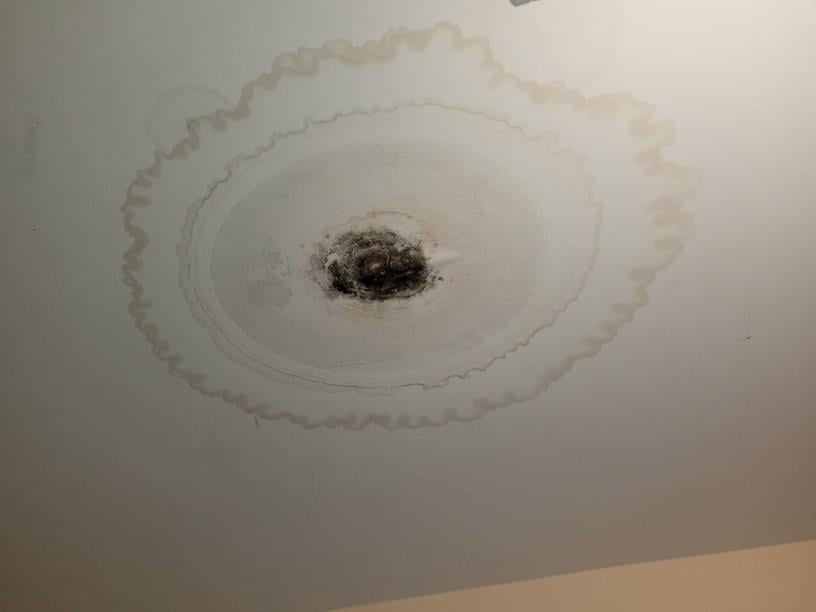6 Proven Strategies for Finding Hidden Water Line Leaks
6 Proven Strategies for Finding Hidden Water Line Leaks
Blog Article
They are making several great observations on Finding hidden leaks as a whole in this article underneath.

Early discovery of leaking water lines can minimize a possible disaster. Some little water leakages might not be visible.
1. Examine the Water Meter
Every home has a water meter. Checking it is a guaranteed manner in which aids you uncover leakages. For beginners, switch off all the water resources. Make sure nobody will certainly flush, use the faucet, shower, run the cleaning equipment or dish washer. From there, most likely to the meter as well as watch if it will transform. Given that nobody is using it, there should be no activities. If it moves, that indicates a fast-moving leakage. Also, if you spot no changes, wait a hr or more and also examine back once more. This implies you might have a sluggish leak that could even be underground.
2. Check Water Usage
If you detect unexpected changes, regardless of your consumption being the very same, it implies that you have leakages in your plumbing system. A sudden spike in your expense suggests a fast-moving leakage.
On the other hand, a steady boost on a monthly basis, despite the very same habits, shows you have a sluggish leakage that's also slowly intensifying. Call a plumber to completely inspect your residential property, particularly if you really feel a warm location on your flooring with piping underneath.
3. Do a Food Coloring Examination
When it comes to water intake, 30% comes from bathrooms. If the color in some way infiltrates your dish during that time without flushing, there's a leakage between the container as well as dish.
4. Asses Exterior Lines
Don't neglect to inspect your outdoor water lines as well. Should water leak out of the connection, you have a loosened rubber gasket. One tiny leak can waste bunches of water and increase your water expense.
5. Evaluate the scenario and also inspect
House owners must make it a routine to check under the sink counters and also also inside cabinets for any kind of bad odor or mold growth. These 2 red flags suggest a leak so punctual attention is needed. Doing regular inspections, even bi-annually, can save you from a significant issue.
Inspect for discolorations as well as compromising as the majority of pipelines and home appliances have a life span. If you presume dripping water lines in your plumbing system, do not wait for it to intensify.
Early discovery of leaking water lines can reduce a prospective catastrophe. Some tiny water leakages might not be noticeable. Checking it is a guaranteed method that assists you discover leaks. One little leakage can squander lots of water and increase your water costs.
If you think leaking water lines in your plumbing system, do not wait for it to escalate.
How to Know If Your Home Has a Hidden Leak
Water Meter Reveals Inexplicable Water Usage
If you’d like to test whether or not there’s a leak somewhere in your home, you can do this using your water meter. Here is how to conduct the test:
Don’t use any water in your home for at least 30 minutes; this also means not turning on faucets or water-using appliances.
Go outside, and check your water meter for activity.
If your water meter shows that there was activity, even though no one was using any water, this proves that there is a leak in your home.Visible Mold or Mildew Growth
Leaks behind walls create moist, dark environments that allow mold and mildew to grow and thrive. Eventually, you might see mold growth forming on the wall closest to a hidden leak.
If mold is growing in an area that receives a high amount of moisture, such as a bathroom, it may simply be an indication that better ventilation is needed. However, if you see mold growth on a wall or the ceiling in an area where you would not expect, you probably have a hidden leak.
Musty, Mildew Odor
Sometimes you might not be able to see the mold or mildew that is growing as a result of a leak. However, the smell can give the problem away just as easily. If you catch a whiff of something musty, there’s a good chance that old water is collecting somewhere in your home that you can’t see.
Stained/Warped Walls, Ceilings, or Floors
When your home soaks up water, a variety of red flags can become visible, including ceiling stains, bubbling drywall, warped walls, and sagging floors. While these issues can be caused by excess humidity, they can also be signs that a pipe or plumbing connection has started leaking behind your walls.
Inexplicably High Water Bill
After a while, you get a general sense for what your water bill should be. If you own a pool or sprinkler system, your bill will tend to be higher during summer. However, if you receive a water bill that seems especially high, and you can’t figure out what caused it, then you may have a hidden leak somewhere that’s increasing your bill.
https://www.plumbingjoint.com/blog/2019/july/how-to-know-if-your-home-has-a-hidden-leak/

We had been guided to that write-up about Top leak detection hacks through an associate on another web page. If you please take a moment to promote this blog entry if you liked it. Thank you for your time spent reading it.
Reliable? That's us! Report this page